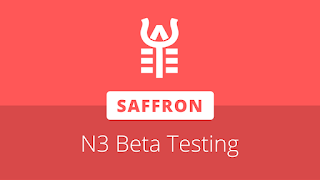Binance Staking has secured two positions on the Neo Council. At the time of press, Binance has voted with approximately 2.1 million NEO to secure its places in the Top 21.
Binance is the world's largest custodial exchange with nearly US $9.07 billion in 24-hour volume, according to CoinCap.io. Binance Staking is a service that allows users to earn distributions offered on proof-of-stake or other networks that distribute rewards to participants.
The platform provides two types of staking: flexible and locked. Flexible staking offers fewer rewards but allows users to move the underlying assets at any time. Locked staking requires users to deposit a token for a specific time frame but provides higher yields. For example, a minimum of 0.01 NEO locked for 15, 30, 60, or 120 days will earn increasing yields of 5.79%, 7.49%, 8.79%, and 13.56% (made in GAS distributions), respectively.
In the announcement post, Neo Global Development said "Binance Staking's new membership in the Neo Council is expected to bring new diversity to the Neo community and increase cross-platform user engagement for both parties."
Under Neo's governance mechanism, NEO holders use their tokens to votes in 21 nodes that serve on the Neo Council. The Neo Council's task is to maintain the network's health and liveness. Council members vote on issues impacting the state of the Neo network, such as blockchain parameters (i.e., fees) and electing other onchain roles (i.e., oracle nodes, NeoFS ring nodes).
To vote, a wallet points its address to a candidate, and any NEO held in that wallet designates favor of the Council member. Neo Council members receive a proportional 10% share of the 5 GAS distributed in each new block. NEO holders that vote for Council members will receive 80%, and the final 10% is distributed among all NEO holders, regardless of if the tokens are used to vote or not.
Binance is the world's largest custodial exchange with nearly US $9.07 billion in 24-hour volume, according to CoinCap.io. Binance Staking is a service that allows users to earn distributions offered on proof-of-stake or other networks that distribute rewards to participants.
The platform provides two types of staking: flexible and locked. Flexible staking offers fewer rewards but allows users to move the underlying assets at any time. Locked staking requires users to deposit a token for a specific time frame but provides higher yields. For example, a minimum of 0.01 NEO locked for 15, 30, 60, or 120 days will earn increasing yields of 5.79%, 7.49%, 8.79%, and 13.56% (made in GAS distributions), respectively.
In the announcement post, Neo Global Development said "Binance Staking's new membership in the Neo Council is expected to bring new diversity to the Neo community and increase cross-platform user engagement for both parties."
Under Neo's governance mechanism, NEO holders use their tokens to votes in 21 nodes that serve on the Neo Council. The Neo Council's task is to maintain the network's health and liveness. Council members vote on issues impacting the state of the Neo network, such as blockchain parameters (i.e., fees) and electing other onchain roles (i.e., oracle nodes, NeoFS ring nodes).
To vote, a wallet points its address to a candidate, and any NEO held in that wallet designates favor of the Council member. Neo Council members receive a proportional 10% share of the 5 GAS distributed in each new block. NEO holders that vote for Council members will receive 80%, and the final 10% is distributed among all NEO holders, regardless of if the tokens are used to vote or not.












